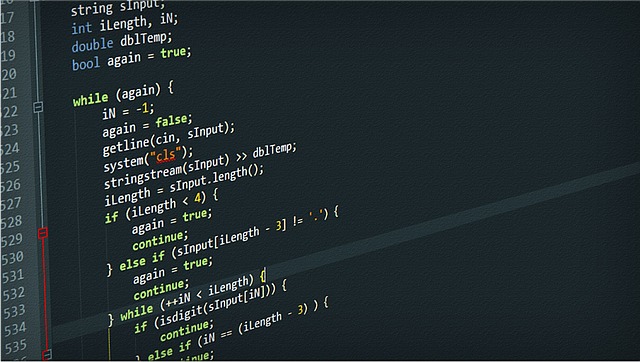C Language: A Comprehensive Overview
C is a powerful and widely-used programming language. It’s considered a foundational language, meaning many other languages (like C++, Java, Python, and JavaScript) have borrowed concepts and syntax from it. Here’s a breakdown covering its history, features, uses, strengths, weaknesses, and where to learn more:
1. History & Origins
- Developed in: Early 1970s by Dennis Ritchie at Bell Labs.
- Purpose: Originally created for the Unix operating system. It was designed to be a system programming language – efficient, flexible, and capable of directly interacting with hardware.
- Evolution: C evolved from earlier languages like BCPL and B.
- Standardization: ANSI C (C89/C90) and ISO C99, C11, and C17 are important standards that define the language’s behavior. These standards ensure portability across different platforms.
2. Key Features
- Procedural: C is primarily a procedural language, meaning programs are structured around procedures (functions) that perform specific tasks.
- Low-Level Access: C provides direct access to memory through pointers, allowing for fine-grained control over hardware. This is a key reason for its use in system programming.
- Portability: C code can be compiled and run on a wide variety of platforms with minimal changes, thanks to standardization.
- Efficiency: C is known for its speed and efficiency. It generates relatively small and fast executable files.
- Rich Set of Operators: C has a comprehensive set of operators for arithmetic, logical, bitwise, and other operations.
- Functions: C relies heavily on functions for modularity and code reuse.
- Data Types: Supports fundamental data types like
int,float,char,double, and allows for the creation of user-defined data types usingstructandunion. - Pointers: A powerful (and sometimes challenging) feature that allows direct manipulation of memory addresses.
- Preprocessor: The C preprocessor handles directives like
#includeand#definebefore compilation, enabling features like header files and conditional compilation. - Standard Library: C comes with a standard library providing functions for input/output, string manipulation, memory allocation, and more.
3. Common Uses
- Operating Systems: Large parts of operating systems like Linux, Windows, and macOS are written in C.
- Embedded Systems: C is dominant in programming microcontrollers and embedded systems (e.g., in cars, appliances, industrial equipment). Its efficiency and low-level access are crucial here.
- System Programming: Developing compilers, interpreters, and other system-level tools.
- Game Development: While C++ is more common now, C is still used in game engines and performance-critical parts of games.
- Databases: Many database systems are implemented in C.
- Network Programming: Building network applications and protocols.
- High-Performance Computing: C is used in scientific simulations and other computationally intensive tasks.
4. Strengths of C
- Performance: Very fast and efficient.
- Control: Provides a high degree of control over hardware.
- Portability: Highly portable across different platforms.
- Mature and Well-Established: A large community, extensive documentation, and a wealth of existing code.
- Foundation for Other Languages: Understanding C makes learning other languages easier.
- Resource Efficiency: Requires relatively little memory and processing power.
5. Weaknesses of C
- Complexity: Can be complex to learn, especially concepts like pointers and memory management.
- Manual Memory Management: Programmers are responsible for allocating and deallocating memory, which can lead to memory leaks and segmentation faults if not handled carefully.
- Lack of Object-Oriented Features: C is not an object-oriented language (although C++ builds upon C and adds OOP features).
- Security Vulnerabilities: Due to manual memory management and low-level access, C code can be prone to security vulnerabilities if not written carefully.
- Error-Prone: The lack of automatic bounds checking and other safety features can make C code more prone to errors.
6. Basic C Code Example (Hello, World!)
#include <stdio.h> // Include the standard input/output library
int main() {
printf("Hello, World!\n"); // Print the message to the console
return 0; // Indicate successful program execution
}
Explanation
#include <stdio.h>: This line includes the standard input/output library, which provides functions likeprintffor printing to the console.int main(): This is the main function, where program execution begins. Theintindicates that the function returns an integer value.printf("Hello, World!\n");: This line uses theprintffunction to print the string “Hello, World!” to the console.\nis a newline character, which moves the cursor to the next line.return 0;: This line returns the value 0 from themainfunction, indicating that the program executed successfully.
7. Where to Learn C
- Online Courses:
- Coursera: Offers courses from universities like the University of California, Irvine. (https://www.coursera.org/courses?query=c%20programming)
- edX: Similar to Coursera, with courses from various institutions. (https://www.edx.org/search?q=c%20programming)
- Udemy: A wide range of C programming courses, often at affordable prices. (https://www.udemy.com/topic/c-programming/)
- Codecademy: Interactive learning platform. (https://www.codecademy.com/learn/learn-c)
- Books:
- The C Programming Language by Brian Kernighan and Dennis Ritchie (often called “K&R”) – The classic reference.
- C Primer Plus by Stephen Prata – A comprehensive and beginner-friendly book.
- Head First C by David Griffiths – A visually engaging and practical approach.
- Websites:
- GeeksforGeeks: A great resource for C tutorials and examples. (https://www.geeksforgeeks.org/c/c-language-introduction/)
- Tutorialspoint: Another good source of C tutorials. (https://www.tutorialspoint.com/cprogramming/index.htm)
- Compiler/IDE:
- GCC (GNU Compiler Collection): A popular open-source compiler.
- Clang: Another powerful compiler.
- Visual Studio (Windows): A comprehensive IDE with a C compiler.
- Code::Blocks: A free, open-source IDE.
- Dev-C++: A simple IDE for Windows.
In conclusion
C remains a relevant and important language, especially for system-level programming and embedded systems. While it has some challenges, its performance, control, and portability make it a valuable skill for any programmer. If you’re looking to understand how computers work at a lower level or build high-performance applications, learning C is an excellent investment.
